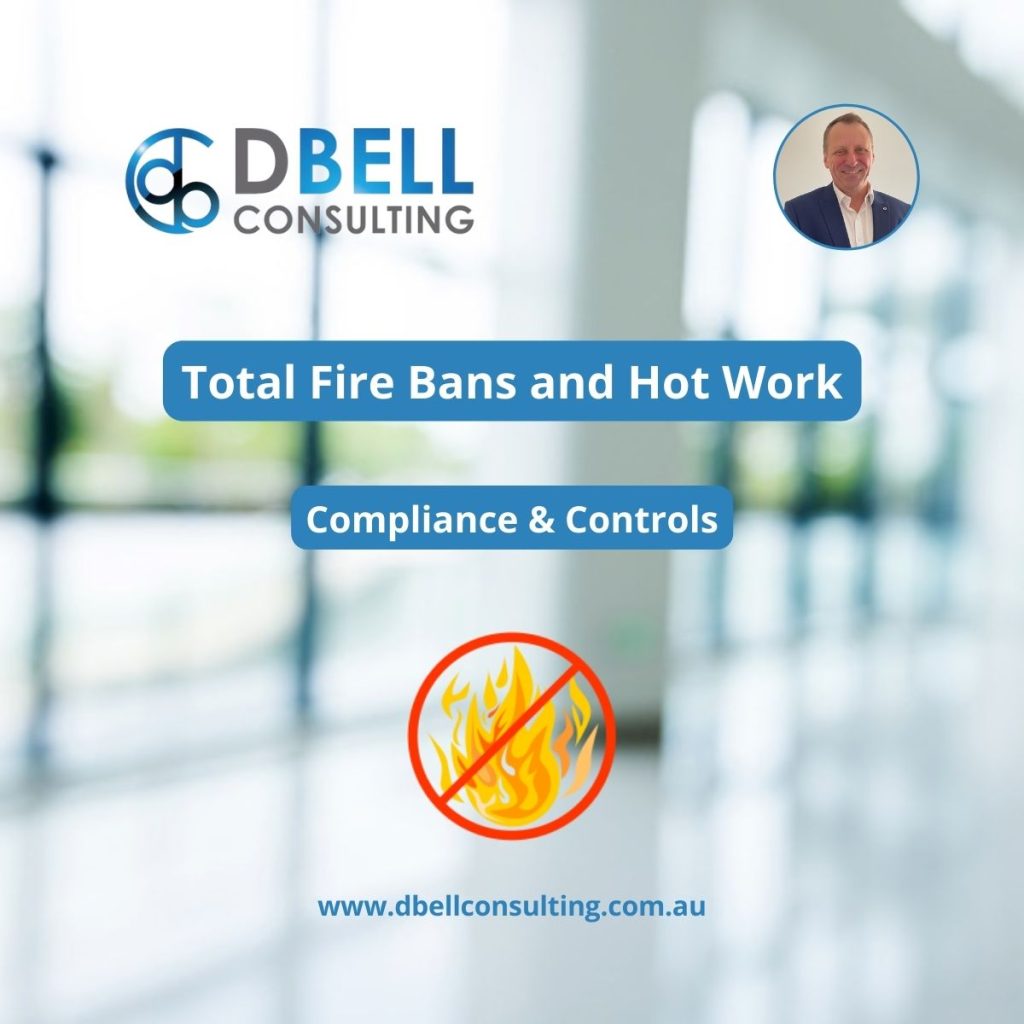ARE YOU AWARE OF THE IMPLICATIONS OF TOTAL FIRE BANS ON UNDERTAKING HOT WORKS?
What is a Total Fire Ban (TFB)?
A Total Fire Ban (TFB) is declared on days when fires are most likely to threaten lives and property. This is because of predicted extreme fire weather or when there are already widespread fires and firefighting resources are stretched.
As of 1 September 2022, the WA Department of Fire and Emergency Services (DFES) has updated the Fire Danger Rating System (FDRS) so that it is now consistent across all Australian States and Territories.
This new system uses 4 simple ratings: Moderate, High, Extreme, Catastrophic, to classify fire danger at fire weather districts across Australia.
This introduces new processes for how to control the risk associated with works conducted during a Total Fire Ban.

Conducting Hot Works During a Total Fire Ban
During a Total Fire Ban, prescribed activities (e.g. Hot Work, Road Work, Off-road Work) can be carried out by a business (in the course of trade or commerce) under specific conditions and criteria.
When planning to conduct Hot Work during a Total Fire Ban in your work area, DFES Western Australia permits these activities to be conducted if:
- The DFES Online Notification Form is submitted a minimum of 30 minutes and maximum of 24 hours before the work starts; and
- The Fire Danger Rating is not ‘Catastrophic’; and
- You can meet all conditions of the DFES Fact Sheets and Checklists for the work to be completed.
To guide you in meeting these requirements:
- You can find out the day before (usually after 5pm) if a Total Fire Ban has been declared on the Emergency WA website.
- The Online Notification Form allows you to choose multiple activities in the one submission.
- The DFES Total Fire Ban Activity Checklist – Hot Work should be reviewed to ensure that the risks associated with works can be being suitably managed and controlled.
- You can choose multiple local governments within the one online notification form as long as the locations you are working fall within the same DFES region.
- If you are working in different locations and across different DFES regional boundaries, you will need to submit an online notification form for each different DFES Region to ensure all local government areas (LGAs) you are working in during a Total Fire Ban are notified.
Once you’ve submitted the DFES Online Notification Form:
- A screen will pop up which will ask you if you would like to save a copy of your submission for your records;
- A copy of the submission or the NOT-Number should be provided to the person who is doing the work on the day.
- If there are consecutive TFBs declared, you will need to submit a new online notification each day where there is a new TFB declared.
NOTE: If the Fire Danger Rating is Catastrophic work must stop unless it is being carried out in relation to the provision of an essential service.
Compliance References
For more information about managing the risks of conducting work during a Total Fire Ban in Western Australia, consult the below sources, or review those for the region or jurisdiction that you work in:
- DFES Website – Total Fire Ban Information (link)
- DFES Fact Sheet – Hot Work (link)
- DFES Total Fire Ban Activity Checklist – Hot Work (link)
- DFES Total Fire Ban Online Notification Form (link)
- Bureau of Meteorology – Western Australia Current Fire Danger Ratings (link)
- Emergency WA Website – Active Fire Bans (link)
Should you need any assistance with your health and safety risk management, contact DBell Consulting.


